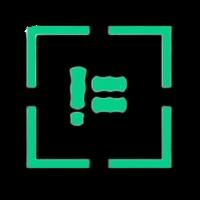Not Equal To(!=)
Our project is an AI-powered tool that helps people prepare for and take interview rounds, providing fast, accurate, and secure answers through the use of Web3 technology.
Created on 8th January 2023
•
Not Equal To(!=)
Our project is an AI-powered tool that helps people prepare for and take interview rounds, providing fast, accurate, and secure answers through the use of Web3 technology.
The problem Not Equal To(!=) solves
It's a common experience among competitive programmers to feel stumped by a problem, even after putting in our best efforts. However, it often happens that a new, creative solution suddenly comes to mind in an unrelated situation. The unfortunate reality is that we aren't always able to access a computer or other device to test out this new strategy when it occurs to us. This can be frustrating, as it feels like a missed opportunity to potentially solve the problem at hand. It's important to remember, however, that these moments of sudden inspiration can often lead to even greater breakthroughs in the future, and it's worth taking the time to record and review them when we have the chance.
This is where Web3 technologies and machine learning OCR software can be incredibly useful. With these tools, we can access systems and run code on the go, even when we are not physically in front of a computer. Additionally, the use of these technologies can help to streamline the interview process, allowing programmers to not only practice and run code, but also prepare for the interview experience with greater ease.
Challenges we ran into
Integrating a frontend and backend was a challenging task, especially in the context of a hackathon where time is limited. Some of the challenges during this process included:
-
Data formatting: Ensuring that the data being sent between the frontend and backend is properly formatted and can be easily parsed by the receiving system.
-
API design: Designing and implementing a clear and consistent API for the frontend and backend to communicate through can be a time-consuming task.
-
Security: Ensuring that the frontend and backend are secure and that sensitive data is properly protected is crucial, but we are proud that we acomplished this task in a short time frame.
Using a Concordium extension and implementing OCR (Optical Character Recognition) can add additional layers of complexity to the integration process. For example, ensuring that the Concordium extension is properly configured and that OCR is implemented in a way that is accurate and efficient was challenging.
